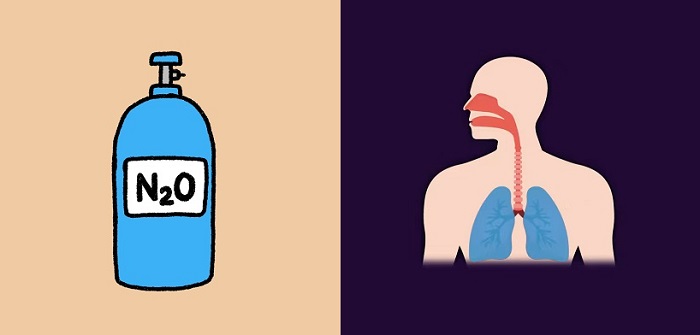We all know that laughing gas can make someone laugh uncontrollably, but do you know how it works? Usually, our lungs are filled with air, i.e. oxygen that we inhale from the surroundings. Then oxygen is transferred from our lungs to the blood which carries it throughout the body for regular bodily functions.
Now laughing gas is nothing but Nitrous oxide (N2O), a colorless and non-flammable gas. When we inhale N2O, it displaces the air present in our lungs. This deprives the blood from oxygen and when not enough oxygen reaches the brain, we feel light-headed, resulting in reduced thinking ability and increased mental confusion. The gas mixes with the blood and stimulates the laughing center of the brain. Also, Nitrous Oxide triggers the release of dopamine, a hormone that produces feelings of pleasure and satisfaction.
Laughing gas is often used for recreational activities such as at parties and festival scenes, but it also has medicinal uses. Its effect is quick and also ends in a very short time, that's why when its effect ends, the person becomes calm too quickly. Even then it should not be smelled in excess, as some side effects may occur.
The gas was discovered by an English scientist Joseph Priestley in 1793. For many years after its discovery, the gas was used only for recreational purposes. But once a dentist named Horace Wells in America, during an event, observed that a person who inhaled this gas was injured but did not feel the pain. This gave him the idea of using it in tooth extraction. He first used it on himself during the extraction of one of his teeth, which was successful to some extent, but the medical world did not consider it completely successful.














0 comments:
Post a Comment